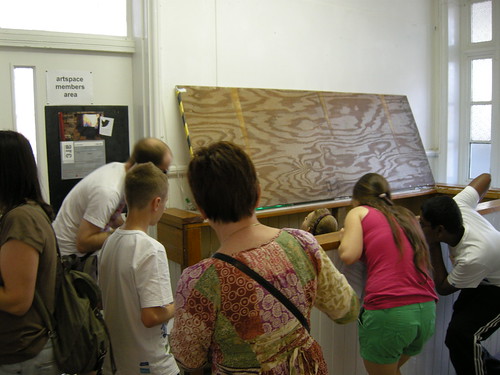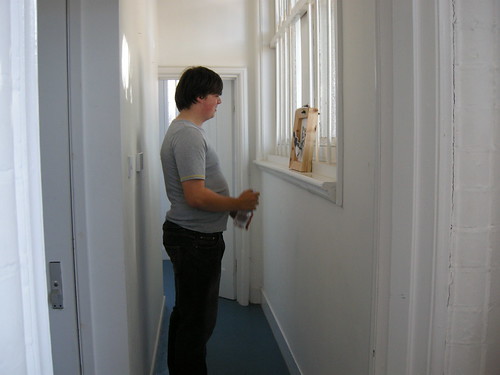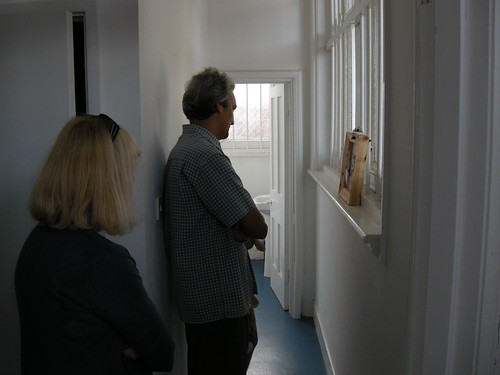Colony presentation at Pecha Kucha Coventry
Here’s a words-and-pictures version of the presentation I did for Pecha Kucha Coventry on the 30th of September…
~~~~~
2010. I’m working with GPS data and walking around Birmingham, on the cusp of starting to try and weave together thoughts about public space, DIY tech, playfulness and the ways in which combining these can change our relationships with the places where we live.
By November I’m starting to get the headpictures – the fleeting images of a half-seen thing that compel you to make the thing so that you can get the rest of the detail.
In my mind’s eye I could see small groups of people carrying creatures that would give them some sort of extended awareness of the built environment around them. I wanted to know how this group would affect – and be affected by – the city as it moved through it.
This project became Colony, And this is a whistlestop tour of what happened next…
I wanted the communication between the person and the creature to mainly be through touch. We’re so used to interacting with things through screens, but I wanted to leave sight free for everything else in the world, not looking down at this thing.
The first prototype had a long contact interface across the person’s body.
Here’s an abridged description from Holly Gramazio:
It has half a dozen different types of vibration (a central shake, for example, and a long ripple that moves from the narrowest end of the bundle to the widest).
It decides when to vibrate – and what sort of vibration to make – entirely at random.
The first thing we noticed was that was that holding the bundle gives you an immense feeling of entitlement.
It’s a cross between a Magic 8 Ball, a personality quiz, a pet, and an emperor.
Out of that first proof of concept we saw how readily people would invest the random vibrations with personality and intent. It also gave us permission to explore the secret corners of Birmingham.
The next iteration had vibrations that were linked to the built-up-ness of the immediate surroundings – this led us into more corners and alleyways.
What we also got from this location-aware version was an excuse not just to go to different places, but to interact with those places in non-usual ways.
We all agreed there was something very nice in the soft, warm, light, secretive cuddliness of the creatures.
So there was really only one direction to go in next!
Big, heavy and cumbersome, I made three of these wooden drums that tapped at different intensities depending on whether you were out in the open or not.
With consumer electronics constantly striving for smaller and sleeker, it was interesting to see the effects of a mobile device you have to work hard at. Really hard at.
The residency those were made through also presented some chewy problems regarding how to exhibit these objects. I usually use galleries as hubs for activity, so exhibiting actual things isn’t something I do a lot of.
When I see the objects as being only half of the constructed assemblage, how do I usefully represent them after the experience and when the person half is not there?
Another residency. This time with a few days to think a bit about the Colony as linked individuals.
I did some experiments with these little radio units and playing around a bit in carparks at night to find out when they stop being able to communicate with each other.
Later, I built on this to make Landscape-reactive sashes. Here the members of the proto-colony are wearing these yellow sashes that have a radio and a vibration motor in them. There’s a central node who is analysing the GPS data and sending out the vibration instructions to all the sashes.
Become separated from the group and your sash goes still.
With Drift, I wanted to find out if it was possible to ‘read’ – to interpret – the vibrations from the sashes.
Given a choice of 3 possible broadcasters – these magnificent creatures – could you deduce which one it was from thinking about the different places where they were stood?
Last year the heavy objects came out again. This is David and Sam from the wonderful If Wet… walking them around rural Worcestershire after I challenged them to use them as musical instruments.
All three of us walked for something like an hour, and I’m fairly sure they saw them more as instruments of torture rather than as a way of sonifying the landscape.
Then I was invited to present a workshop as part of the Global Conference On Mobility Futures at Lancaster University. These are the sashes being walked around a drizzly campus.
Mobilities Studies is a youngish area of research that explores the movement of people, ideas and things, as well as the broader social implications of those movements.
Although the weather was uninspiring I’m getting a lot out of Mobilities Studies as a way of thinking about my work.
This Summer I got an Arts Council grant and finally a chance to dedicate a bigger chunk of time to developing the creatures. Priorities were 1) investigating how to design the bodies so they could communicate the creature’s emotional state, and 2) building in an awareness of the Colony as a whole.
The latter was beyond my skills, so I delegated that to Tarim, who actually knows how to do computer programming. The former started here with bits of string, post-it notes and dissecting pushpuppets for scientific purposes.
The next step was a heartbeat inside cardboard boxes. Even that had the power to make people feel empathy towards the thing and curiosity towards their surroundings.
Over a total of about 35 days we’ve gone from that, to 3 of these.
I spent 9 days working with Sarah Barnes at the laser cutting facility at UWE. Here we built many, many iterations of hearts and spines and brackets and levers.
With physical manifestations to play with, we could figure out the mechanics and also the intricacies of how it all related back to the human body in motion.
We were confident we were onto a winner with this design, and this was confirmed when we put the creatures into the arms of a small group of playtesters.
Humans of course being the part of the system that it’s hardest to design for.
I’m starting to understand about how to manage the getting-to-know-eachother stage where empathy is formed, the Colony is bonded and a shared language is developed.
I was hoping the Colony would provide something of a spectacle, making other people nearby curious about what was going on. I wasn’t prepared for quite how many people came up to us and wanted to touch, wear and talk about the creatures.
I love that these things make a space for stranger: stranger interactions.
And then there was all the unexpected stuff too: one woman spent ages drawing with one of the creatures by dragging it around by one end.
We can also confirm they’re unexpectedly good at skateboarding and that they do not like being dangled over deep water.
I think it’s important for people to have a framework for sitting down and sharing their stories and experiences after walking with these things. I’ve also been working with David Haylock to map the data collected by the creatures, so we have a visual reference for when different things happened and a starting point for thinking about why they happened.
~~~~~
I didn’t really have a snappy closing line, so instead I invited the evening’s organiser, Janet, to come up and meet the critter I’d bought with me



























